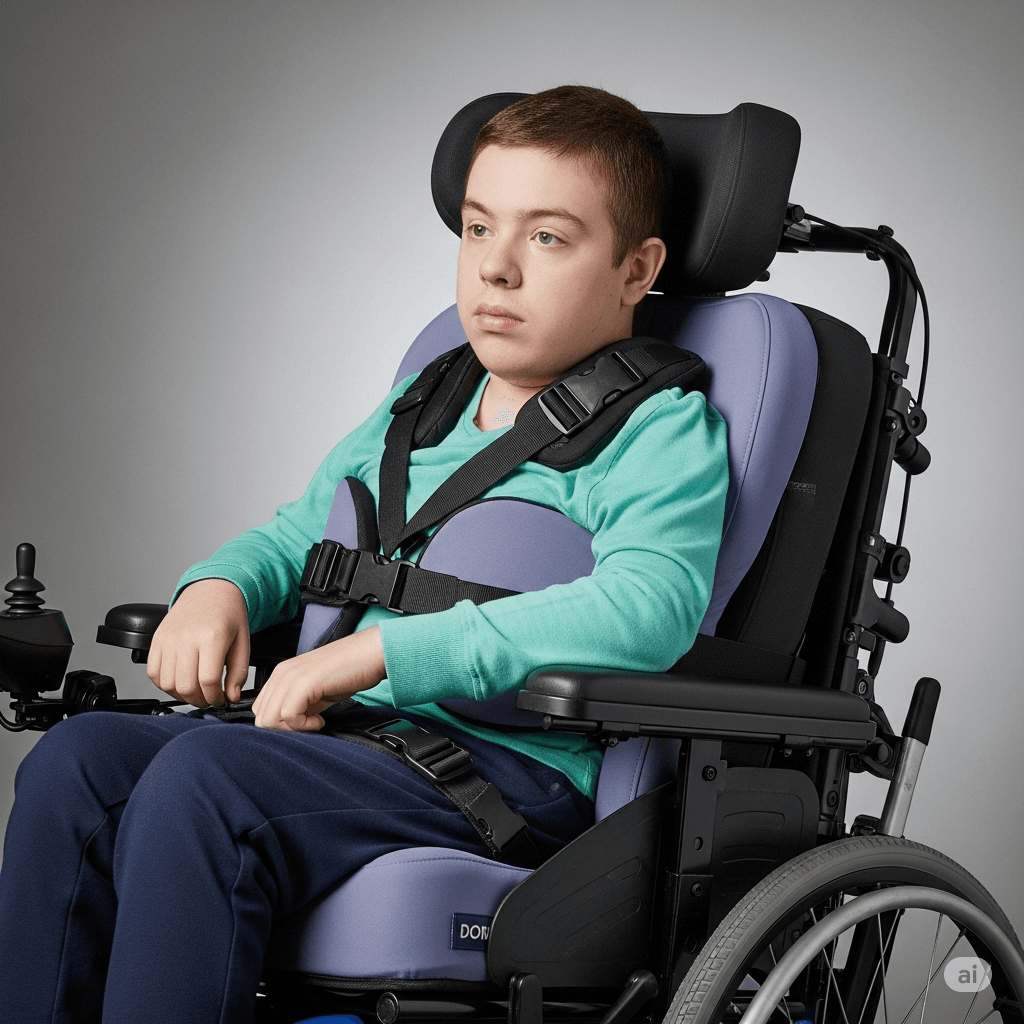For individuals who rely on wheelchairs for mobility, proper seating and positioning are paramount for comfort, health, and overall quality of life. An ill-fitting or inadequate seating system can lead to discomfort, pain, pressure sores, and functional limitations. Understanding the different types of wheelchair seating and positioning options is crucial for individuals with Cerebral Palsy (CP) and their caregivers to ensure optimal support and comfort throughout the day.
The Importance of Comfortable Wheelchair Seating and Positioning
Comfort in a wheelchair goes beyond simply feeling at ease. Proper seating and positioning contribute to:
- Pressure Redistribution: Reducing the risk of pressure sores by evenly distributing weight and minimizing pressure on bony prominences.
- Postural Support: Maintaining proper alignment of the spine and pelvis, which can improve breathing, digestion, and overall body mechanics.
- Increased Stability: Providing a stable base of support for functional activities, such as reaching, transferring, and propelling the wheelchair.
- Pain Reduction: Minimizing discomfort and pain associated with poor posture, muscle strain, and pressure on tissues.
- Enhanced Function: Promoting optimal positioning for using arms and hands, controlling power wheelchairs, and engaging in social activities.
- Improved Comfort and Endurance: Allowing individuals to sit comfortably for longer periods, increasing their participation in daily life.
Key Components of Wheelchair Seating and Positioning
A comprehensive wheelchair seating and positioning system typically involves several key components, each playing a vital role in comfort and support:
Seat Cushions
The seat cushion is the foundation of the seating system, providing support and pressure redistribution under the pelvis and upper thighs. Different types of cushions cater to varying needs:
- Foam Cushions: Offer varying levels of support and pressure relief. Contoured foam can provide better positioning.
- Gel Cushions: Provide good pressure distribution and can conform to the body’s shape.
- Air Cushions: Offer excellent pressure relief by allowing immersion and offloading of pressure points. They may require more maintenance.
- Hybrid Cushions: Combine different materials like foam and gel to offer a balance of support and pressure relief.
- Custom Molded Cushions: Designed to match the individual’s unique body contours for maximum support and pressure distribution, often used for complex positioning needs.
Back Supports
The back support helps maintain proper spinal alignment and provides trunk stability. Options include:
- Sling Backs: Standard on many wheelchairs, offering basic support. May not be suitable for individuals needing significant postural support.
- Planar Backs: Flat, rigid backs that can offer more support than sling backs.
- Contoured Backs: Shaped to match the natural curves of the spine, providing enhanced support and comfort.
- Lateral Supports: Attached to the back support to provide additional trunk stability and prevent leaning.
- Custom Molded Backs: Similar to cushions, these are shaped to the individual’s back contours for maximum support and postural control.
Positioning Supports
These additional components help maintain specific body positions and enhance the function of the cushion and back support:
- Pelvic Positioning Belts: Help stabilize the pelvis and ensure proper positioning on the cushion.
- Thigh Supports (Adductors/Abductors): Control leg positioning and prevent unwanted movement.
- Lateral Trunk Supports: Provide increased trunk stability and can accommodate asymmetries.
- Head Supports: Offer posterior, lateral, or anterior support for the head and neck.
- Foot Supports and Leg Rests: Provide proper positioning and support for the lower extremities, influencing pelvic alignment and comfort. Elevating leg rests can improve circulation.
- Armrests: Support the arms and can contribute to overall posture and comfort. Height-adjustable or removable options offer versatility.
Achieving Comfortable Seating and Positioning
Finding the right combination of seating and positioning components requires a thorough assessment by a qualified professional, such as an occupational therapist or physical therapist specializing in wheelchair seating and positioning. This assessment will consider:
- Individual’s physical needs and functional abilities.
- Posture and spinal alignment.
- Skin integrity risk.
- Comfort level and sitting tolerance.
- Activities and environments where the wheelchair will be used.
- Caregiver needs and abilities.
Based on this assessment, a personalized seating and positioning system can be recommended and adjusted to maximize comfort and function.
For more resources and information on managing daily life with Cerebral Palsy, including mobility and comfort considerations, please visit Living with Cerebral Palsy on CP Family Hope.
Moving Forward: Prioritizing Comfort for Enhanced Well-being
Selecting the appropriate wheelchair seating and positioning system is a critical step in ensuring the comfort, health, and independence of individuals with Cerebral Palsy. By understanding the different types of components available and working closely with a qualified therapist, individuals and their families can find the right fit that promotes optimal comfort and supports a more active and fulfilling life.
FAQs: Exploring Different Types of Wheelchair Seating and Positioning for Comfort
Why is comfort so important in wheelchair seating and positioning?
Comfort directly impacts an individual’s ability to tolerate sitting for extended periods, participate in activities, and maintain overall well-being. Discomfort can lead to secondary issues like pain, skin breakdown, and reduced quality of life.
Can poor wheelchair seating and positioning lead to health problems?
Yes, inadequate support can contribute to pressure sores, poor posture affecting breathing and digestion, muscle imbalances, pain, and fatigue.
How often should a wheelchair seating and positioning system be evaluated?
Seating and positioning needs can change over time due to growth, changes in physical condition, or functional abilities. Regular evaluations, at least annually or whenever significant changes occur, are recommended.
What role does a therapist play in wheelchair seating and positioning?
Therapists are essential for conducting thorough assessments, recommending appropriate seating and positioning components, customizing the system to the individual’s needs, and providing education on proper use and maintenance.
Are custom molded seating systems always necessary for comfort?
Not necessarily. While custom molded systems offer maximum support and pressure distribution for complex needs, many individuals can achieve comfort and proper positioning with off-the-shelf components that are carefully selected and adjusted.
👉 Fill out our FREE Consultation Form today to speak with a legal expert. Your case could make a difference.




